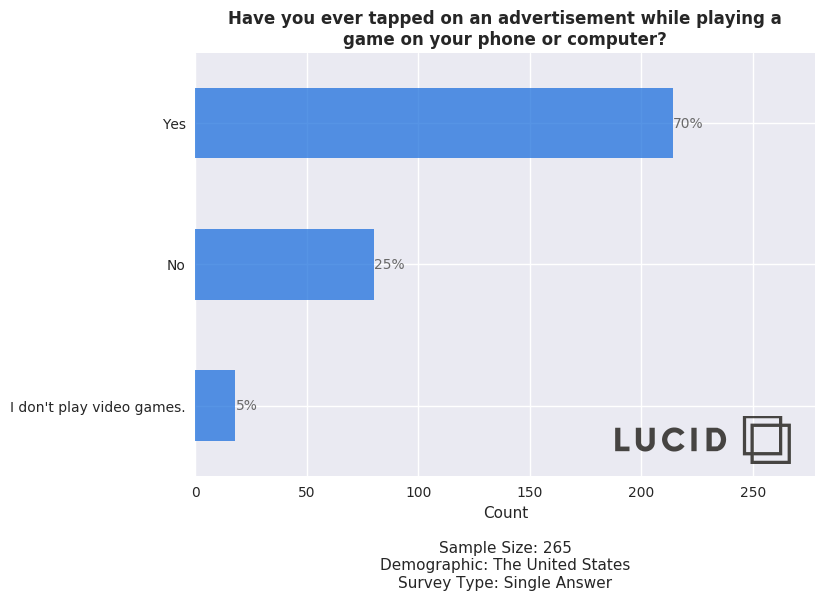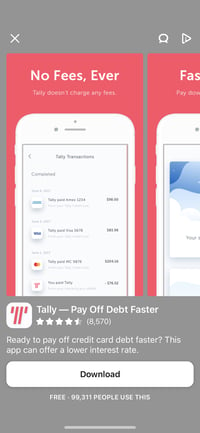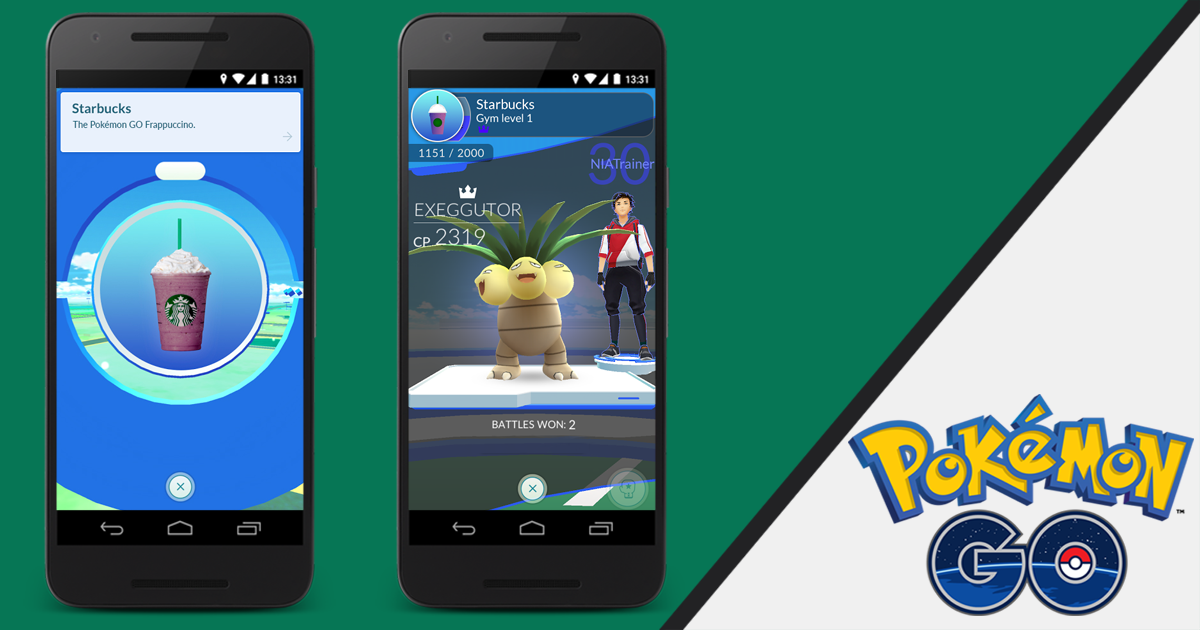how long does a video game designer work a day
Nearly 70% of Americans play some type of video game each day. And, with the growth of live streaming, mobile gaming, AR, and VR, this number could get even bigger. While Twitch.tv, the leading live-streaming platform, hosts millions of users that air video feeds of themselves gaming, many smartphone users also find themselves tapping into multiple mobile games per day. Right now, it seems like there's a video game or gaming platform for everyone. And as many of these games and game systems are beginning to use emerging technology, marketers are getting even more aggressive in this space. Although big companies are looking at in-game marketing tactics more than ever, the interest in reaching gamers actually isn't that new. In fact, video game marketing precedes some of today's most popular video game consoles. While brand awareness strategies have evolved in this space, they've nearly always been there. On top of the opportunities that emerging media might offer marketers in the video game industry, gaming audiences also mirror target audiences of many consumer-facing brands. This means video gaming platforms could be a great place for brands to connect with their target audiences. Gamers are primarily millennials, evenly split in gender, and have aged with the gaming industry. While they were children when the earliest, less-sophisticated games came out, millennials have become very tech-savvy and have embraced today's more innovative gaming platforms. Because of their age, millennials also able to make both big and small purchasing decisions in their households. At this point in their lives, millennials can buy or lease a wide range of products, from soft drinks to mobile devices, to cars. This is one reason why marketers zone in on mediums where this age group is prevalent, such as the gaming space. Along with newer gaming content, millennials also respond well to games that make them feel nostalgic. One example of this was the successful release of the Nintendo Switch, a game system modeled after the 1980s Nintendo. Within 21 months of its launch, 8.7 million Switch units were sold -- making it the fastest-selling gaming console of all time. As marketers read about the possible opportunities associated with video game marketing, they might wonder how brands are actually using this medium to promote products. They also might be asking, "Is this strategy even accessible to me?" In this post, I'll discuss the evolution of video game marketing, show a few examples of how brands are innovating in the space today, and note some tactics that marketers might want to consider if gaming does become more accessible in the far-term. While in-game promotion probably won't be viable for most brands in the short-term, another new platform, such as a viral social media site, might inspire you to get creative with your marketing techniques. Even if marketers can't replicate the strategies below today, they can still use the campaigns as examples of how companies thought outside the box to engage audiences on a new or emerging platform. To give some added perspective on how much the gaming industry has changed, I'll start by noting some of the earliest video game marketing examples. In the early 1990s and 2000s, big brands zoned in on young gamers by creating branded video games. Two memorable companies that did this were Chex Mix and Burger King. In 1996, as children were starting to play video games on their parents' PCs, Chex decided to engage its young audiences by placing a CD-ROM game called Chex Quest at the bottom of Chex Mix boxes. In the intergalactic game, players controlled a space hero called "Chex Man" as he fought off green aliens who would cover their enemies with goo. The game featured multiple levels of difficulty and challenges, including an alien-filled maze. To maintain Chex Man's strength and health when fighting off aliens, players needed to search for and direct him to foods like fruits and boxes of Chex Mix. On a deeper level, the game told a commercial-like story of how heroes and astronauts are fueled by healthy breakfasts, like Chex Mix. This game was not only creative, but it also won many prominent advertising awards. In 1996, the video game won a Golden Effie for Advertising Effectiveness. It also won the Golden Reggie Award for Promotional Advertisement in 1998. Ten years after Chex Quest, Burger King also identified that its audiences enjoyed gaming. In 2006, the restaurant chain began its first foray into the game world by including one of three branded Xbox games -- PocketBike Racer, Sneak King, or Big Bumpin' -- in value meals. Customers could also buy the games for $3.99 each. Each branded game, or advergame, featured the Burger King mascot along with a burger-related theme. Essentially, all of the games, which were created by the ad agency Crispin Porter & Bogusky, were like interactive advertisements that entertained players and reminded them of Burger King. For example, in Sneak King, players would step into the role of "The King," who looks like Burger King's mascot. Gamers then had to deliver Burger King meals to other characters. While the game entertained players, it also highlighted Burger King's menu options and brand in great detail, similarly to a commercial. Within the first weeks of Sneak King's launch, approximately 2.7 million copies of the advergame were sold, making the campaign an ROI success and a win for Crispin Porter & Bogusky. The campaign also won a Clio Award after Burger King claimed it lifted the chain's overall sales. Here's a trailer for Sneak King: Games and consoles have changed drastically since Chex Quest and Sneak King. Not only do video games look more visually stunning, but many online games and Wi-Fi-powered consoles connect players and strangers from all around the world. As the gaming space has evolved, so has video game marketing. While reaching gamers used to require marketers to create an entire branded video game, big brands are now able to re-work traditional strategies, like influencer marketing, product placement, and native advertising to fit into the gaming space. Twitch.tv, which was purchased by Amazon in 2014 and now has over 15 million daily active users, allows people to air a picture-and-picture stream of their computer or game console screen along with a webcam video of themselves. If a person's Twitch profile gets a large number of views and subscribers, they can apply to be verified as a Twitch Partner. Once they're verified, Twitch will give them a small percentage of its advertisement revenue based on their stream's views and the account's subscriber counts. Because of this picture-and-picture format, Twitch quickly became thought of as the social platform for gamers. Since this platform launched, normal people have earned major revenue and gained a huge online following just by streaming themselves playing popular video games. When it comes to marketing on Twitch, there are two major options: One is to advertise and the other involves starting or sponsoring a stream. While Twitch has been growing its advertising program since being purchased by Amazon, it recently began asking advertisers to commit upwards of $50,000 in ad spend per campaign. While Digiday reports that Twitch reps seem confident about advertising ROI, this is definitely a hefty cost for most companies. Because advertising is quite expensive on Twitch, many brands have experimented with starting their own streams. Here are just three notable examples: Wendy's first Twitch stream, which won a Gold Clio, followed an avatar dressed as Wendy who appeared on the online battle game, Fortnite. At one point in Fortnite's online storyline, players were prompted to hunt cattle and transport beef to freezers at nearby restaurants. Once they did this, the players would earn coins. When the Wendy's team heard that Fortnite players were being encouraged to put beef in freezers, the chain tasked its marketing agency, VMLY&R, in creating an avatar that looked like Wendy. Wendy's and its marketing firm then launched a Twitch stream where the avatar began to break into restaurants and destroy freezers: Like a commercial, native ad, or advergame, the goal of the campaign -- aside from engaging new audiences -- was to remind Twitch audiences that Wendy's makes an effort to serve the freshest, best tasting beef to its customers. During the stream, mentions of Wendy's on social media went up by 119%. The stream was also viewed for a total of 1.52 million minutes with a quarter of a million viewers. The campaign also allowed Wendy's fans to interact with her avatar and the stream, which led other Fortnite players to start smashing freezers as well. Viewers of Wendy's stream also began tweeting about it or posting in the feed's comment thread. Because of engagement like this, it made Wendy's company values, brand, and live stream incredibly memorable to gaming audiences. This campaign led Wendy's and VMLY&R to win gold medals at the Clio Awards and the Cannes Lions International Festival of Creativity. According to one Cannes Lions Jury Chair PJ Pereira, the creativeness of this campaign might have opened the door for new marketing opportunities in the future. "[Making Fortnite Fresher] was setting up a new trend instead of being the apex of a previous trend," Pereira told Ad Age. By hosting a nine-hour Twitch stream that followed its mascot playing Fortnite, Wendy's interacted with gamers in a unique new way. In 2015, Old Spice launched a stream that followed a dopey avatar named Nature Man who was "contractually obligated" to do what Twitch viewers told him to do as he walked around a computer-generated forest. As Twitch viewers commented with commands for the avatar, an Old Spice rep that was controlling him would make him fulfill these tasks. At certain points of the Old Spice event, viewers told Nature Man to do things like chop down trees, fight multiple bears, and eat random birthday cakes. Here's a quick highlight reel: Although Old Spice's live stream wasn't directly about its products, it was still very in line with the brand's 2015 commercials, which argued that its body spray "smelled as good as nature." In and before 2015, live streaming was still very experimental. But, like Wendy's, Old Spice identified that many young male audiences were gaming on Twitch and decided to create an experimental campaign to engage them. This strategy seemed to work, as the stream received 2.6 million total views. During a campaign called, "Live Free, Couch Hard," Totino's partnered with Twitch influencers to market its pizza rolls through various Twitch streams. In one of the Totino's streams, which was produced with the help of its marketing firm, 72andSunny, a handful of Twitch stars with millions of subscribers tried to play video games on a couch that moved around like a bucking mechanical bull machine. During Totino's stream, viewers could watch the influencers attempt to play video games while also commenting to say which direction the mechanical couch should move next. Viewers could also comment with an emoji that looked like a pizza roll face created just for the event. Here's a highlight reel that one of the influencers posted on their stream after the event: According to a post from Jason Donaldson, a senior writer for 72andSunny, the stream was watched for a total of 1.8 million minutes and it was the number one trending discussion topic on Reddit during the event. Technically, the focus of Totino's stream was on the notable gamers riding a mechanical couch, rather than on playing one specific game. However, the food company does a great job of identifying alternative content that gamers will still watch and subscribe to -- even if they aren't getting specific game tips. For years, brands have embraced influencer marketing on various social platforms and in many media campaigns. In sports, you might see an athlete wearing running sneakers from a shoe company. In the makeup industry, you might see a vlogger giving a sponsored tutorial for a new lipstick. Now, as gaming has gotten more interconnected and social, influencer marketing is also starting to thrive in the video game industry. As online gamers grow a following, brands now seek them out for endorsements or sponsored content. Here are a few examples: Along with sponsoring single gamers, big brands have also sponsored a number of online gaming teams. Many of these teams successfully compete in ESports, a gaming category that includes online sports, competitions, or battle-oriented games. In many major ESports games, players can compete individually or join a team. As they get better at a game, their game ranking amongst other online players will go up. Those who gain high rankings on ESports games often get recruited to better-performing teams or can even get sponsored by brands, similarly to real-life athletes. Since 2016, Xfinity Comcast has sponsored an ESports league called Evil Geniuses. This league, which is now incorporated as its own company, is made up of top-performing gamers who've gained expertise and high rankings in ESports games like Call of Duty, Halo, Starcraft, and Rocket League. As part of the sponsorship, the Evil Geniuses, which has a major gaming industry following, received a decked out Xfinity Comcast gaming studio. The Xfinity logo has also been placed on Evil Geniuses' official website and added to uniforms that players wear on Twitch streams or at gaming events. Evil Genius's Twitter account also regularly mentions Xfinity or the sponsored gaming studio on its social media accounts. For over 20 years, thousands of people around the world have been playing EA Sports' FIFA World Cup video game series. The ESport game series releases a new World Cup game every year, which allows people to virtually play soccer with others around the world. Like other ESports games, players that get great scores will rise up in online rankings and might gain a following from fellow gamers. Recently, a highly-ranked player from the 2018 FIFA video game, Alex Hunter, got sponsored by Coca-Cola. As part of his sponsorship, Hunter endorses Coca-Cola at real-life gaming events and dresses his avatar in all red. Hunter's avatar was also featured in a Coca-Cola commercial where a child's avatar offers him a Coke before he goes to play a virtual soccer game. Splatoon 2: Splashfest, a Nintendo Switch game created for all ages, opens by giving gamers a choice between two items, such as ice cream or cake. Each of the items that gamers can choose from has a hard color background. At the beginning of each game, users lock in the choice they want to make and get a paintball gun filled with paint that matches the background color of the item they chose. In the recent Japanese release of Splatoon 2: Splashfest, there was a blatantly obvious product placement from McDonald's. Gamers were asked to start the game by choosing between McDonald's Chicken McNuggets or French Fries. The McNuggets were associated with red paint and the French Fries were associated with purple. Here's a quick video (in Japanese) where the hosts discuss which item they think is better to ramp up players before they make their choice. During the game, 71% of those players joined the French Fry team, but the Nugget team surprisingly covered the field with more paint. It's not clear how many people were playing the game, however Splatoon 2 sold over 2 million copies by 2019. This is a great example of a product placement because it feels natural to players and allows them to think about and weigh the differences between two main products rather than just one. Outside of PC or console-based video game marketing, brands are also putting major advertising dollars into mobile game ads. While most people might think that mobile gamers find ads annoying because they block the entire game, research shows that mobile game players are actually more receptive to ads than users of other mobile apps. When I heard about this, I was pretty surprised myself. So, I conducted a quick survey using Lucid software to see if people were actually interacting with ads. Out of a sample of 265 people, 70% said they'd tapped on an ad in a mobile phone game before. This Survey was conducted with Lucid Software Right now, there are a few major ad strategies related to mobile games. One is a standard native ad that links to a business's website. Another is an interactive ad that lets viewers tap and interact with the content in some way. Lastly, big brands like Starbucks are also beginning to experiment with location-based ads in AR games. Here are a few examples of mobile game ad types that you might regularly see: Disney While Disney makes a host of mobile games related to their films, they have also invested millions of dollars into mobile game advertising. In one ad, which they launched to promote the film, "Pirates of the Caribbean: Dead Men Tell No Tales," viewers were prompted to look for and tap a series of items as they watched the film's trailer. Tapping on the ad sent them to more video-based content. While the ad is no longer available to view online, AdColony's Jude O'Connor described the interactive storyline in a post from The Drum, "During the trailer, the user was prompted to play a search game and find objects within the trailer itself, tap the screen and it was almost like a playable ad experience," said O'Connor. "Then, when they were able to find additional pieces it unlocked new content, additional trailers for them, character content at the end of the video. The user then became part of the experience." AdColony, the agency which created the ad for Disney, does not specify results related to the ad, but has noted that it was a success. Here's a Creative Showcase piece where the company goes into detail about what might have made the ad so effective. Disney's interactive mobile game ad strategy is smart because those playing video games want to be interactively entertained. While a standard ad might bore them, something interactive might interest them while in a gaming mindset. Apple Apple runs ads for Apple Music on a number of smartphone and tablet games. This ad is pretty simple and shows mobile gamers the Apple Music logo, an animated music symbol, and a description of the service that says, "Enjoy over 50 million songs. Always ad-free." At the bottom of the ad is a CTA that says "Listen on" followed by Apple Music's Apple Store Icon. Users can tap on the ad to be directed to Apple Music's app store page, Like many effective mobile ads, Apple's design simply explains exactly what the service its selling does without overwhelming mobile viewers with too many words or visuals. Tully Tully, a financial advising and savings app and service, launched a simple and semi-interactive ad for mobile games. In the ad, you can swipe left to see the benefits of using Tully and screenshots of how the app works. At the bottom, you see a quick description of what the app does, it's five-star App Store rating and a CTA button that says "Download." Tully's mobile game ad is an example of how an ad can be simple but still interactive. Even though this ad probably didn't take as much time to design as a more intricate interactive ad, it still allows the viewer to engage with it by swiping through different pages of it to learn more. Starbucks As video games like Pokémon Go combine AR and geo-location to create a new style of mobile gaming experience, brands have also experimented with AR in-game ads. To date, a great example of this was Starbucks -- which sponsored Pokémon Go locations. In 2016, when Pokémon Go was going viral, the coffee chain teamed up with the game's developers to mark 7,800 of its physical locations into Gyms or PokéStops on the AR map. When players entered a Starbucks Gym or PokéStop, they saw an ad for a limited-edition Pokémon Frappuccino. Photo from Pokémon Go Although Starbucks did offer a more traditional in-game beverage ad to players who arrived at its Gyms and PokéStops, the chain more importantly pulled in significant foot traffic from gamers before even revealing the beverage in the Go app. By sponsoring Pokémon Go locations, Starbucks creatively leveraged an AR platform to entertain its customers and pull new audiences into its physical store. While marketers shouldn't just shift all of their resources to start their own version of Chex Quest, it can't hurt to keep up with new mediums that might provide opportunities in the far future. While gaming might not be one of them, a new social media platform might be a great place to experiment with interactive content or other strategies that engage new audiences. The examples above demonstrate how brands identified their audiences, learned about the platforms they were using and aimed to meet them on those platforms. As media continues to evolve, marketers at all company sizes will want to keep thinking of new strategies that will meet their prospects where they are -- even if those audiences are on a somewhat newer platform. 
A Brief History of Video Game Marketing
Chex Mix's Chex Quest (1996)
Burger King's Branded Games (2006)
The Current State of Ads in Gaming
Common Video Game Marketing Strategies
Twitch Streaming
Wendy's
Old Spice
Totino's
Gamer Sponsorship
Xfinity Comcast Sponsors Evil Geniuses
Coca-Cola Sponsors Alex Hunter
Product Placement
McDonald's Products in Splatoon 2: Splashfest
Mobile Gaming Ads

Interactive Mobile Ads
Native Ads


Augmented Reality Ads

Navigating Gaming and Emerging Mediums


Originally published Oct 21, 2019 7:00:00 AM, updated June 10 2021
how long does a video game designer work a day
Source: https://blog.hubspot.com/marketing/video-game-marketing
Posted by: pendarvisstideass60.blogspot.com

0 Response to "how long does a video game designer work a day"
Post a Comment